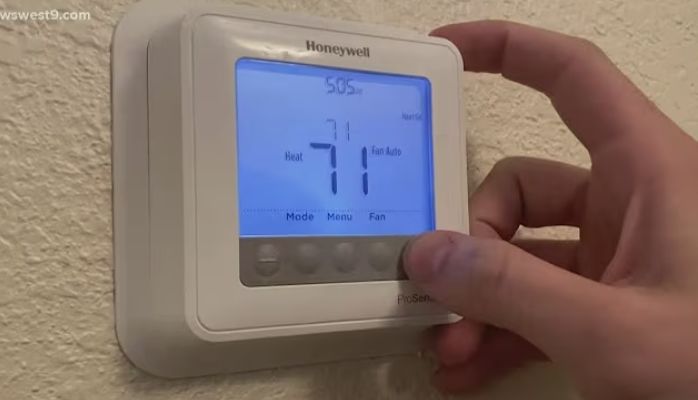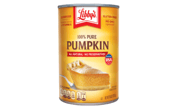
The annual household debate over the thermostat setting is heating up again—and this year, the stakes are higher than ever. With winter approaching, American families are facing some sobering news about their heating bills. The cost of staying warm at home is expected to jump an average of 7.6%, to $976 this season, according to a new estimate from the National Energy Assistance Directors Association.
For many Americans over 60, especially those on fixed incomes, these rising costs represent more than just household budget adjustments—they're a real challenge to maintaining both comfort and financial stability during the coldest months of the year.
The good news? Understanding how to optimize your thermostat settings, combined with some strategic planning, can help you navigate both family disagreements and rising energy costs this winter.
The magic number isn't so magical anymore
You've probably heard the standard advice: set your thermostat to 68 degrees in winter.
The Department of Energy still recommends this temperature, with Ram Narayanamurthy from the Building Technologies Office suggesting that "anywhere around 70 degrees is a good target" for comfortable living.
But here's what's changed: the cost of maintaining that comfort varies dramatically depending on where you live and how you heat your home.
Electricity prices are expected to rise 18% in the West, 21.4% in the South and 19.7% in the Midwest.
Meanwhile, electricity users could see a 10.2% increase in their heating costs this winter.
"These increases might not sound dramatic in dollar terms to well-off families, but to families on the edge of poverty they can be devastating."
The impact isn't uniform across all heating methods.
Natural gas costs are rising from an average of $639 to $693 this winter, but there's some relief for certain households.
Americans who use heating oil or propane will actually save money this winter, with average costs set to fall 4% and 5%, respectively.
Also read: How one thermostat setting can lower bills and stop mold in its tracks
Why location matters more than ever
Your ZIP code now plays a bigger role in your heating strategy than your personal comfort preferences.
Some regions are experiencing much steeper price increases than others, making location-specific planning crucial.
The Northeast is seeing more moderate increases compared to other regions, while Western, Southern, and Midwestern states are facing the steepest electricity price hikes.
If you live in these higher-impact areas, every degree you can comfortably lower your thermostat becomes more valuable.
Regional heating cost increases for 2025 winter season
West: 18% increase in electricity prices
South: 21.4% increase in electricity prices
Midwest: 19.7% increase in electricity prices
Northeast: 7.2% increase (most moderate)
Also read: Unlock the perfect thermostat setting to lower your heating bills!
Special considerations for senior health and safety
The World Health Organization recommends keeping indoor temperatures between 64 and 75 degrees for healthy people, but for seniors and those with health conditions, the minimum shouldn't drop below 68 degrees.
This isn't just about comfort—it's about health and safety.
As we age, our bodies become less efficient at regulating temperature, making us more vulnerable to both hypothermia and the health complications that can arise from living in consistently cold conditions.
Joint stiffness, decreased immune function, and increased risk of cardiovascular stress are all concerns when indoor temperatures drop too low.
Also read: Budget-friendly tricks to keep your home warmer without more heat
Smart money-saving strategies that actually work
The traditional advice about lowering your thermostat when you're away still holds true—and it's more important than ever.
Dropping your thermostat 7 to 10 degrees for eight hours a day can save up to 10% annually on heating and cooling costs.
But there are additional strategies specifically valuable for seniors:
Time your heating smartly: Many seniors spend more time at home than working-age adults, but you can still benefit from temperature adjustments.
Consider slightly lower temperatures during the warmest part of the day (mid-afternoon) when natural sunlight helps warm your home.
[p]Leverage technology without the complexity: Smart thermostats can reduce heating costs by up to 20% according to utility companies, and many modern versions are designed with senior users in mind.[/p]
Look for models with large, clear displays and simple programming options.
Zone heating for frequently used rooms: Space heaters have become much safer with modern safety features that automatically shut off if they tip over or overheat.
Using them strategically in the rooms you spend the most time in can reduce your overall heating needs.
Also read: Are you making these home repair mistakes that could be draining your wallet?
Programs and assistance designed for seniors
Many utility companies are recognizing the particular challenges seniors face with rising energy costs.
Companies like Consumers Energy are proactively reaching out to customers aged 65 and older through Senior Check-in programs, offering personalized payment assistance options and energy-saving strategies.
The federal Low Income Home Energy Assistance Program (LIHEAP) remains available, though the amount of federal assistance available to help people cover utility bills is expected to remain flat despite rising costs.
This makes it even more important to explore local utility programs and state-specific assistance options.
Also read: This simple trick could slash your energy bill by $38 every month—Find out how!
Understanding the bigger picture
The current spike in heating costs isn't just a seasonal inconvenience—it's part of a larger trend affecting household budgets.
Energy arrearages (unpaid energy bills) have risen by about 31%, from approximately $17.5 billion to $23.0 billion by June 30, 2025.
This dramatic increase shows that many American families are already struggling to keep up with energy costs.
For seniors on fixed incomes, these rising costs can force difficult choices between heating and other necessities.
Understanding this context helps explain why mastering thermostat strategy has become more than just a household convenience—it's a financial necessity.
Did you know?
Did you know?
Modern electric space heaters are dramatically safer than older models, with built-in features that automatically shut them off if they tip over, overheat, or run too long. This makes targeted room heating a safer option for seniors than it used to be.
Also read: Heatwave alert: 6 smart AC tips for you to stay comfortable and save money
Technology that doesn't intimidate
Many seniors worry that smart thermostats are too complicated, but today's models often feature:
- Large, backlit displays that are easy to read
- Simple scheduling options (just "home" and "away" settings)
- Smartphone apps that adult children can help set up
- Voice control compatibility for hands-free adjustments
- Emergency override features for safety
The key is choosing a model that matches your comfort level with technology while still providing meaningful energy savings.
Your winter heating game plan
- Set your baseline temperature at 68-70 degrees for health and comfort
- Lower the temperature by 7-10 degrees when away for 8+ hours
- Consider smart thermostat installation for potential 20% savings
- Research local utility assistance programs specifically for seniors
- Use regional cost data to prioritize energy-saving investments
- Never compromise your health—keep temperatures at safe levels
Also read: New rule could cost homeowners a fortune—here’s how to keep your bills low with simple tips!
Moving forward with confidence
The thermostat wars don't have to escalate into budget battles.
With heating costs rising across most of the country, having a clear strategy becomes even more important.
Start by understanding your regional cost trends, then work with household members to establish temperature settings that balance comfort, health, and financial reality.
Remember, the goal isn't to endure a cold winter—it's to stay comfortable while making smart financial choices.
Whether you're dealing with rising electricity costs in the South and West or navigating natural gas price increases elsewhere, the right combination of technology, assistance programs, and strategic thermostat management can help you weather both family debates and rising energy bills.
Read next:
- Stay warm this winter without turning up the heat—Walmart’s cozy $8.99 find
- Exclusive insights from doctors on the frightening “quad-demic” threat this winter
- Energy assistance programs are throwing some seniors a lifeline this winter
What strategies have worked best in your household for balancing comfort and cost during winter months? Have you found particular utility programs or thermostat settings that made a real difference in your energy bills?
Primary Source
https://www.usatoday.com/story/money/2024/11/24/thermostat-winter-home-heating/76472301007/
More bad news for Americans battling higher prices: Your winter heating bills are about to rise | CNN Business
Cited text: The cost of staying warm at home is expected to jump an average of 7.6%, to $976 this season, according to a new estimate from the National Energy Ass...
Excerpt: The cost of staying warm at home is expected to jump an average of 7.6%, to $976 this season, according to a new estimate from the National Energy Assistance Directors Association.
https://www.cnn.com/2025/09/19/economy/winter-heating-bills-price-increase
Heating costs to spike this winter – especially for some Americans: study | WOSH-AM
Cited text: FTC sues Ticketmaster over alleged ‘deceptive’ tactics that made tickets more expensive · The cost forecast also varies by region, with electricity pr...
Excerpt: Electricity prices are expected to rise 18% in the West, 21.4% in the South and 19.7% in the Midwest.
https://www.1490wosh.com/2025/09/27...s-winter-especially-for-some-americans-study/
Heating costs to spike this winter – especially for some Americans: study
Cited text: The cost forecast also varies by region, with electricity prices expected to rise 18% in the West, 21.4% in the South and 19.7% in the Midwest.
Excerpt: Electricity prices are expected to rise 18% in the West, 21.4% in the South and 19.7% in the Midwest.
https://www.ksn.com/news/national-w...s-winter-especially-for-some-americans-study/
The cost to heat your home this winter is expected to increase. See how much. - CBS News
Cited text: Those who rely on natural gas to heat their home could see an 8.4% jump in their bill, while those who use electricity could see a 10.2% increase.
Excerpt: electricity users could see a 10.2% increase
https://www.cbsnews.com/news/home-heating-cost-winter-winter-electric-bill-2025/
Heating costs to spike this winter – especially for some Americans: study | WOSH-AM
Cited text: The cost to heat one’s home with natural gas is also expected to go up this winter, jumping from an average of $639 to $693, due to a rise in wholesal...
Excerpt: Natural gas costs are rising from an average of $639 to $693
https://www.1490wosh.com/2025/09/27...s-winter-especially-for-some-americans-study/
Heating costs to spike this winter – especially for some Americans: study
Cited text: The cost to heat one’s home with natural gas is also expected to go up this winter, jumping from an average of $639 to $693, due to a rise in wholesal...
Excerpt: Natural gas costs are rising from an average of $639 to $693
https://www.ksn.com/news/national-w...s-winter-especially-for-some-americans-study/
Heating costs to spike this winter – especially for some Americans: study | WOSH-AM
Cited text: Meantime, other Americans who use heating oil or propane to warm their houses will actually save money this winter, NEADA projects, with the average c...
Excerpt: Americans who use heating oil or propane will actually save money this winter, with average costs set to fall 4% and 5%, respectively.
https://www.1490wosh.com/2025/09/27...s-winter-especially-for-some-americans-study/
Heating costs to spike this winter – especially for some Americans: study
Cited text: Meantime, other Americans who use heating oil or propane to warm their houses will actually save money this winter, NEADA projects, with the average c...
Excerpt: Americans who use heating oil or propane will actually save money this winter, with average costs set to fall 4% and 5%, respectively.
https://www.ksn.com/news/national-w...s-winter-especially-for-some-americans-study/
How Seniors Can Cut Heating Costs by 20% with Consumers Energy's New Winter Program
Cited text: The company recommends installing programmable smart thermostats, which can reduce heating costs by up to 20%.
Excerpt: Smart thermostats can reduce heating costs by up to 20%
https://www.stocktitan.net/news/CMS...ns-for-seniors-in-need-this-q0hls8x1a9q2.html
How Seniors Can Cut Heating Costs by 20% with Consumers Energy's New Winter Program
Cited text: Seniors can save up to 20% on heating costs by installing a programmable smart thermostat, with additional 1-3% savings for each degree lowered.
Excerpt: Smart thermostats can reduce heating costs by up to 20%
https://www.stocktitan.net/news/CMS...ns-for-seniors-in-need-this-q0hls8x1a9q2.html
How Seniors Can Cut Heating Costs by 20% with Consumers Energy's New Winter Program
Cited text: Consumers Energy has announced a special initiative to help senior customers manage their winter energy bills through March 31, 2025. The company is p...
Excerpt: Companies like Consumers Energy are proactively reaching out to customers aged 65 and older through Senior Check-in programs, offering personalized payment assistance options and energy-saving strategies.
https://www.stocktitan.net/news/CMS...ns-for-seniors-in-need-this-q0hls8x1a9q2.html
More bad news for Americans battling higher prices: Your winter heating bills are about to rise | CNN Business
Cited text: At the same time, the amount of federal assistance available to help people cover their utility bills is expected to remain flat.
Excerpt: the amount of federal assistance available to help people cover utility bills is expected to remain flat
https://www.cnn.com/2025/09/19/economy/winter-heating-bills-price-increase
The cost to heat your home this winter is expected to increase. See how much. - CBS News
Cited text: · Since Dec. 31, 2023, energy arrearages — unpaid energy bills that homeowners owe to their utility company — have risen by about 31%, from approximat...
Excerpt: Energy arrearages (unpaid energy bills) have risen by about 31%, from approximately $17.5 billion to $23.0 billion by June 30, 2025.
https://www.cbsnews.com/news/home-heating-cost-winter-winter-electric-bill-2025/






